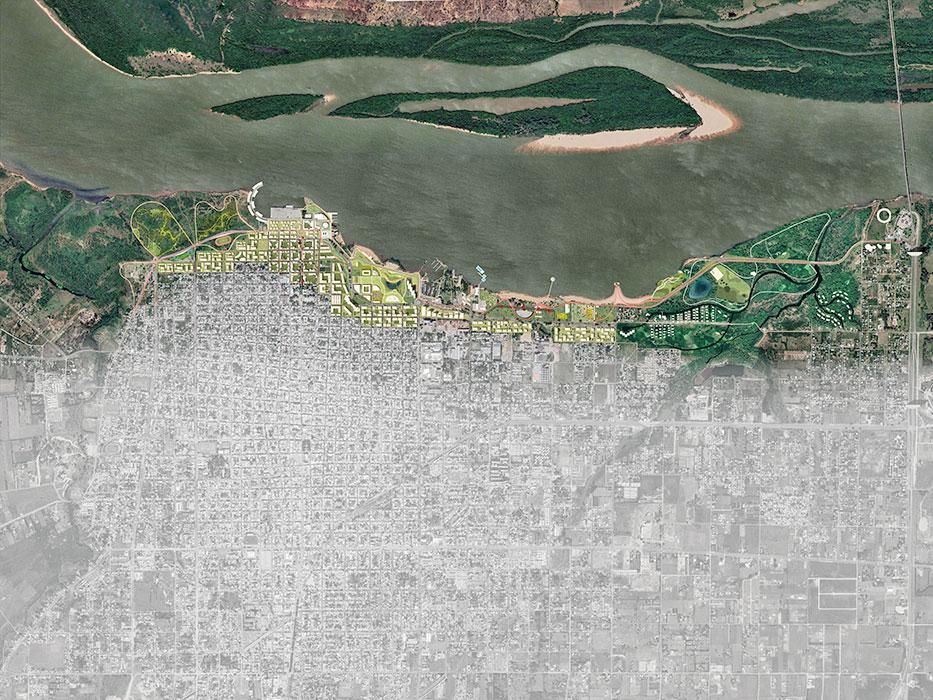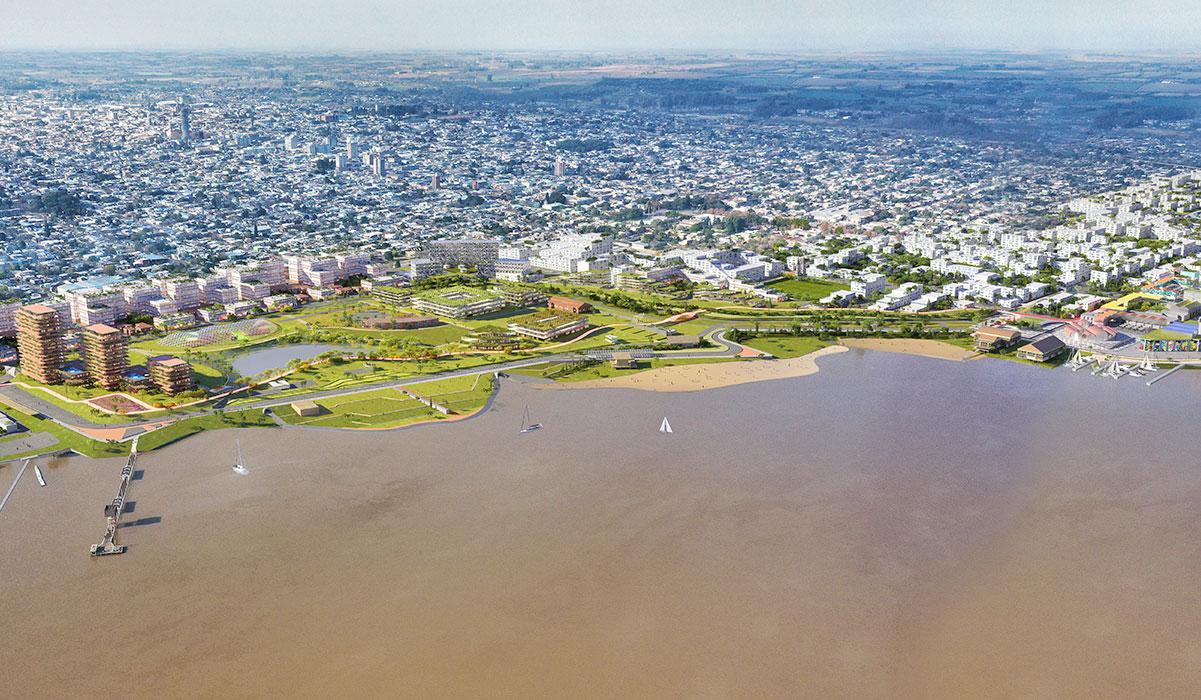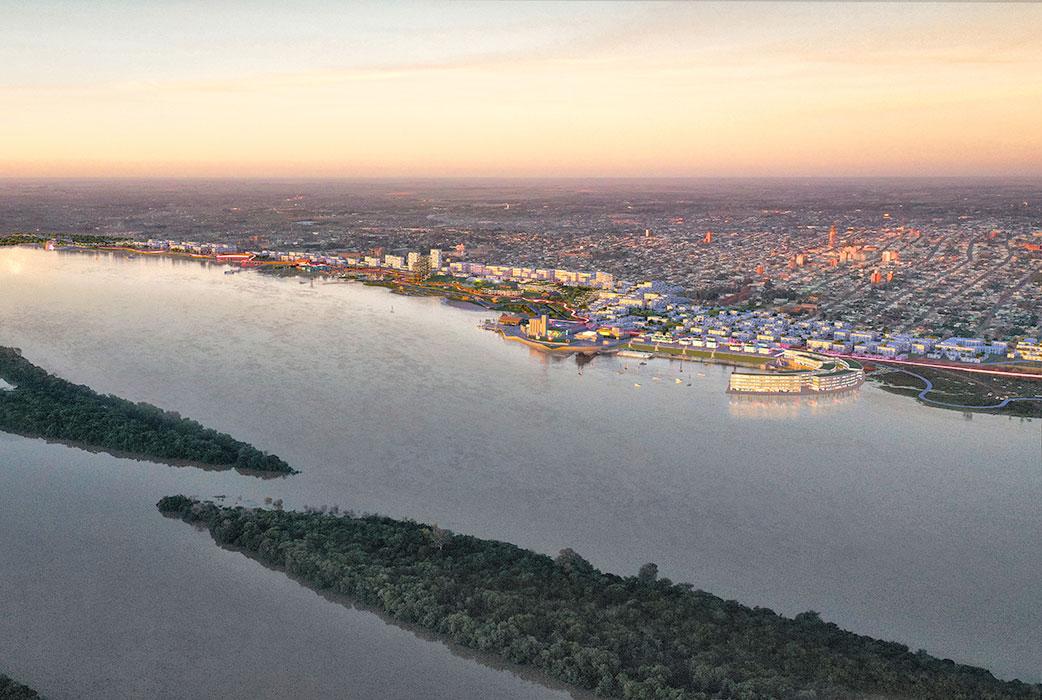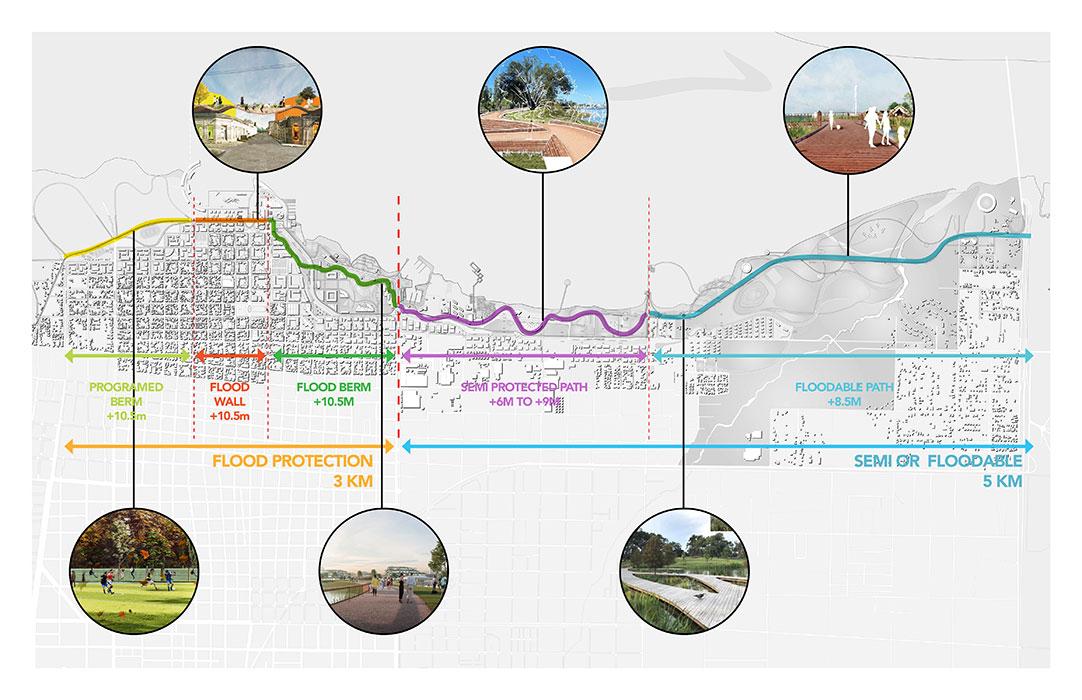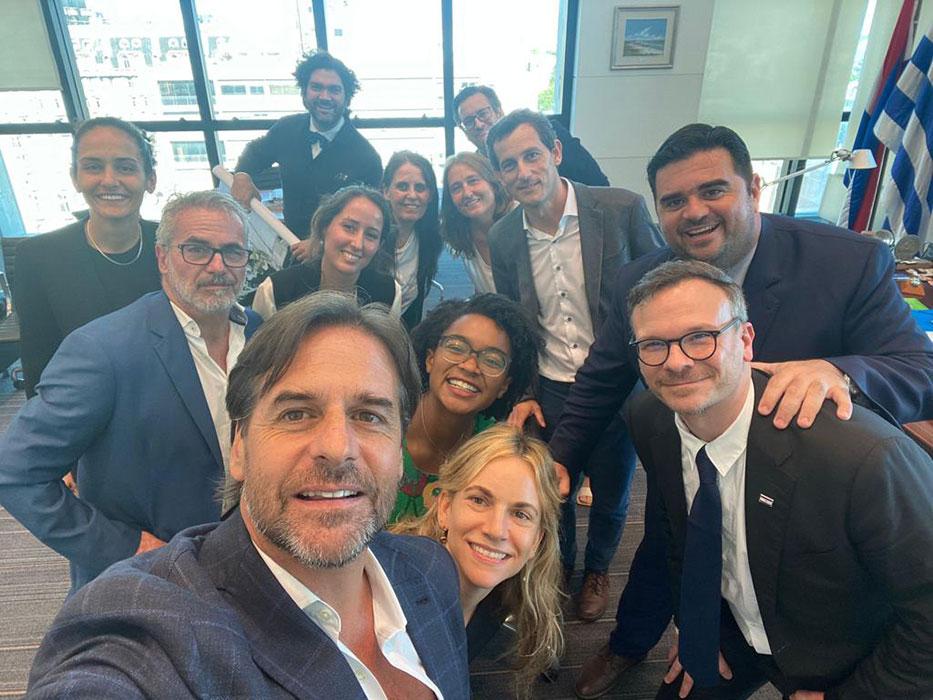Paysandú Master Plan
Mitigating the impacts of flooding and fostering a sustainable, connected community in Paysandú, Uruguay.
The Challenge
Intense rainfall that overwhelms municipal sewer systems. Floods that damage businesses, critical infrastructure and local transportation. Periods of extreme heat lasting three or more days. These are just a few examples of climate hazards that have caused significant damage to the local economy and community of Paysandú, Uruguay.
Paysandú, located on the banks of the Uruguay River, faces significant challenges due to the river’s tendency to swell after upstream rains, impacting low-elevation areas along its path — a problem that is expected to worsen with more frequent severe storms. As global temperatures rise, strengthening resilience planning is crucial for future development in the city.
What we saw as a threat, we are going to see as an opportunity.
Here's How
We joined a team with architect OMA, landscape architect West 8 and mobility specialist MIC-HUB, and provided resilience consulting to develop a masterplan that enhances the relationship between Paysandú and the river, a source of risk for the city but also the core of its identity. The plan focuses on minimizing property damage, preventing service interruptions, promoting public safety, improving quality of life and protecting infrastructure. We achieved this by conducting a risk and resilience assessment that addressed primary climate shocks and stresses in the area, including riverine flooding, heavy precipitation and extreme heat.
Results
Building a resilient city
The masterplan is structured across three phases to accommodate decision-making, budgetary considerations and construction timelines and constraints. Past events, relevant codes, standards and hazard levels were considered when analyzing climate shocks and stresses. We could then determine vulnerabilities based on area-wide impacts and propose potential measures to mitigate climate risks and minimize disruptions.
Key recommendations in the plan include enhancing utility redundancy, integrating resilient energy production and advancing water management systems tailored to future climate projections. The plan also calls for implementing resilient building practices and property management strategies to mitigate flood damage, increase stormwater detention and infiltration systems and optimize passive flood prevention technologies.
The masterplan also integrates Smart City technologies to build resilient and connected urban infrastructure. For example, the plan includes provisions for early warning flood detection systems and free, high-speed mobile charging stations in case of a widespread power outage.
Connecting the Paysandú coastline
The landscape of Paysandú reveals a significant issue: inadequate connection and integration between green spaces, some of which are worsening due to informal dwelling and insufficient parking. This lack of connection also impacts transportation, with issues stemming from a lack of a continuous coastal link from north to south.
Enter the Spline, a path designed to connect and protect. The Spline will provide a pedestrian path that winds through cultural structures and opens new recreational areas, all while helping protect infrastructure against flooding. The path will take on various forms, from a public thoroughfare and discrete berm to an elevated park.
A sustainable way to navigate the city
The plan seeks to create a resilient, community-oriented landscape that integrates the riverfront as a central mobility asset. This approach spans three phases, starting with low-cost interventions to reduce vehicle use along the riverfront establishing a robust network of public transport and micro-mobility hubs and implementing adaptable parking strategies. As the plan progresses, the city anticipates a shift towards sustainable modes of transportation, supported by parking solutions that promote public space and environmental sustainability.
The masterplan aims to use the Spline to prioritize pedestrian-friendly spaces and alternative mobility modes over vehicular traffic to move toward sustainable transportation habits. One key component involves implementing shared lanes that mark road spaces to encourage shared usage between drivers and cyclists in areas that don’t have dedicated bike paths, laying the groundwork for future bike lane installations.
The Masterplan ultimately offers a new area for development in Paysandú, focusing on reshaping the city's mobility network and incorporating resilience strategies. By bridging the city with the waterfront, the plan will create a unique destination that strengthens the bond between the residents and the Uruguay River.
Our Team



